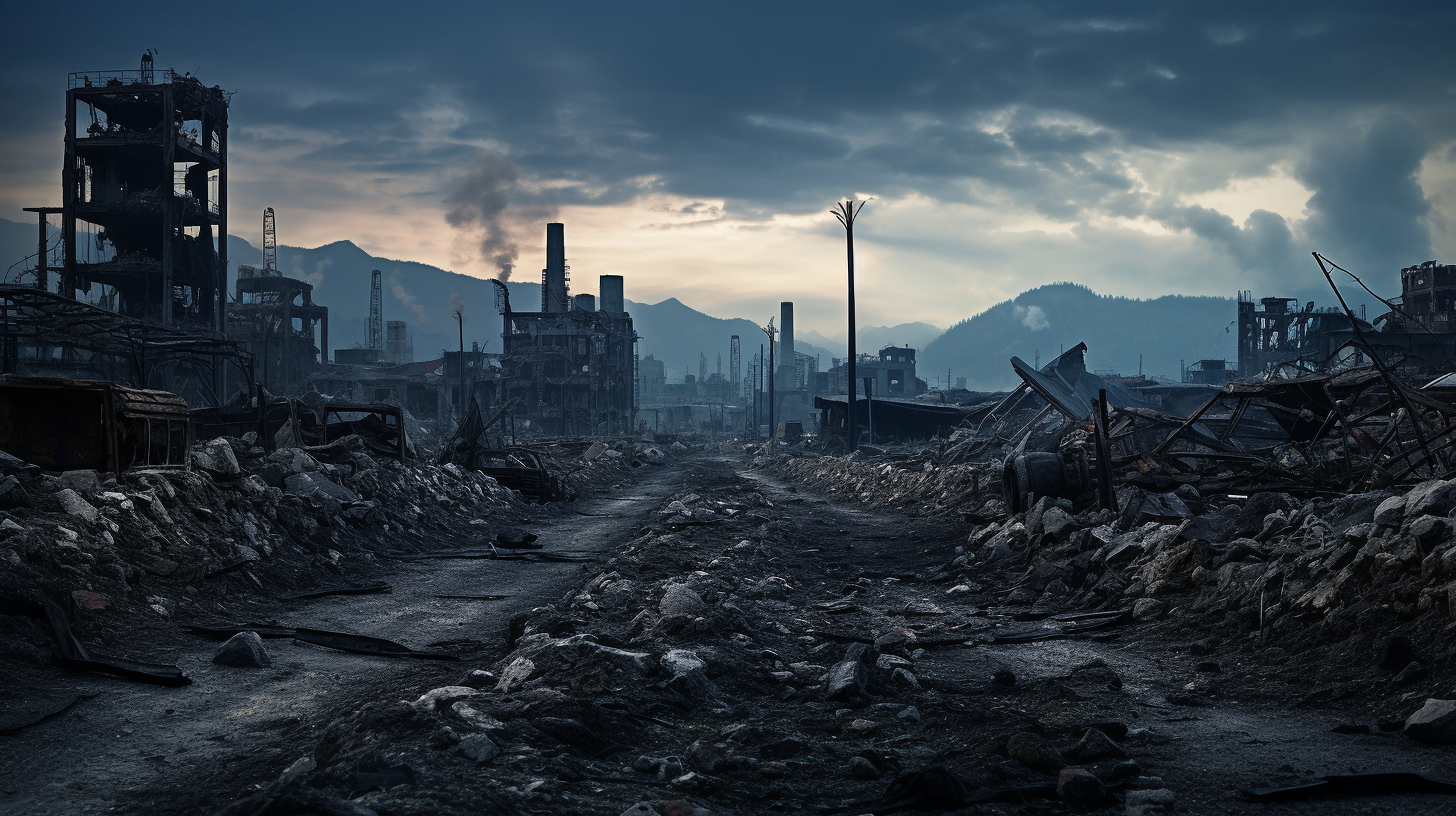The dust settles on the remnants of what was once a vibrant ecosystem. Skyscrapers, now just skeletal structures jutting out from the earth—a morbid reminder of our past dominance. In this bleak landscape we call the ‘present,’ where hope seems as diminished as the sunlight filtering through the dense smog, there is an unyielding quest that roars silently beneath the surface: the quest for resilience; the quest to rediscover what it means to be human, to survive, and to adapt against seemingly insurmountable odds.
In this harrowing context, a band of survivors has emerged, unwavering in their resolve. They call themselves ‘The Resilient Ones’ — a fitting name for those who refuse to succumb to despair. These individuals have found ways to harness the chaos into something remarkable—an evolution of spirit and innovative survival tactics born from the direst of necessities.
Amid ruined cityscapes, precious seeds sprout through cracks in the asphalt, a literal and metaphorical sign of life’s tenacity. Rooftop gardens festoon what were once gleaming high-rises, and wind turbines crafted from the remains of a technological yesteryear hum with the sound of renewal. The faint echoes of a society long lost, replaced by a new symphony of sustainability and resourcefulness.
Closer to ground, communities have redefined living. Communal living is no longer a quirk of the bygone era but a necessity, a method to pool together skills and hope. In a throwback to the barter system, people exchange goods and services—no longer held ransom by the illusion of currency, relishing instead in the wealth of solidarity and mutual support.
Yet, it is not an easy path. The ‘new’ world has its own breed of challenges. Climate-induced superstorms batter the fragile semblances of life, and yet, time and time again, The Resilient Ones rebuild. They learn, adapt, and improve their defenses, not just architecturally but also emotionally. For many, the ruins have become a canvas, a place to etch out an existence that perhaps, in its austerity, is a more accurate reflection of what it means to be truly alive: minimal and yet, significantly more profound.
Then there is the question of learning from past mistakes. Can this perseverance of human spirit be enough to right the wrongs of a thousand yesterdays? Perhaps not. The scars are too deep, the loss, too great. But within these scars, there is a story—a script that narrates a cautionary tale that the past is not a place of habitation, but a point of reference, a stark reminder, and a stepping stone to a different future.
As you walk through the rubble, you might find artworks born from the refuse—splashes of color against the grey, hymns to the enduring nature of beauty, even amid devastation. Music workshops harness the sound of the wind and the patter of rain, creating symphonies that encapsulate the heart of a world reborn from ruins, not merely to mimic but to evolve.
From necessity rises innovation. Old technologies are revamped with the wisdom of hindsight. Research and development, once a field driven by profit, now thrives on the ethos of survival and sustainability. Energy-efficient inventions sprout from small community labs, repurposing waste into life’s essentials.
In the eye of the observer, these efforts may seem minuscule against the backdrop of dystopian decay, but therein lies the crux; it is not the grandiosity of the act, but its significance in the fabric of human continuity. These are acts of hope, not in the naïve belief that the world will one day return to its former glory, but hope grounded in the determination that life, in whatever form, will persist.
This is not just a story of survival but a testament to the indomitable power of the human psyche, to endure and find meaning amidst chaos. ‘The Resilient Ones’ are not a people defined by a single identity or location; they are a symbol, representing each and every being that chooses to see the flicker of light in an eternal night. They remind us that even hope, in ruins, is still hope, and that resilience is, perhaps, the greatest of human legacies.
